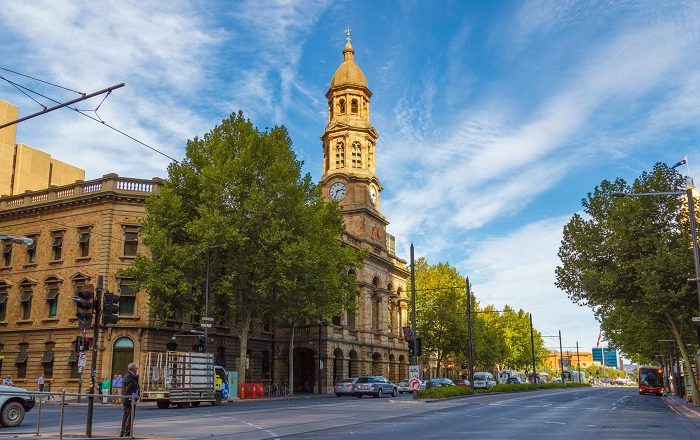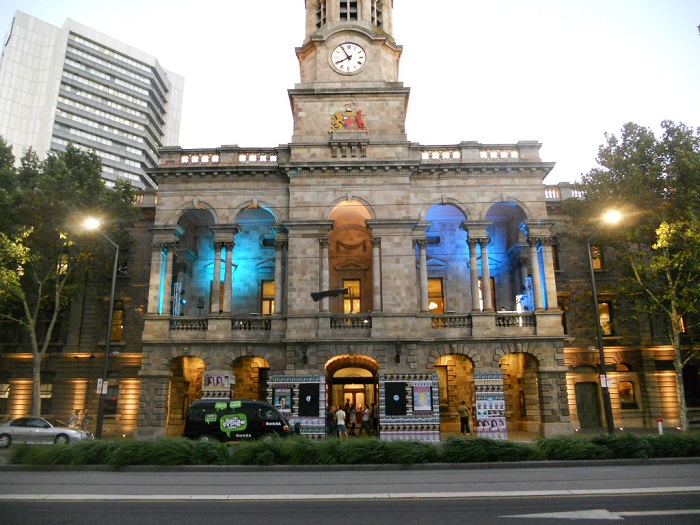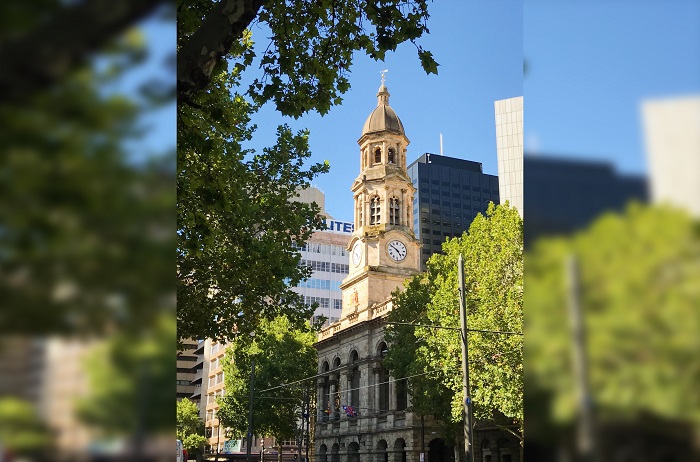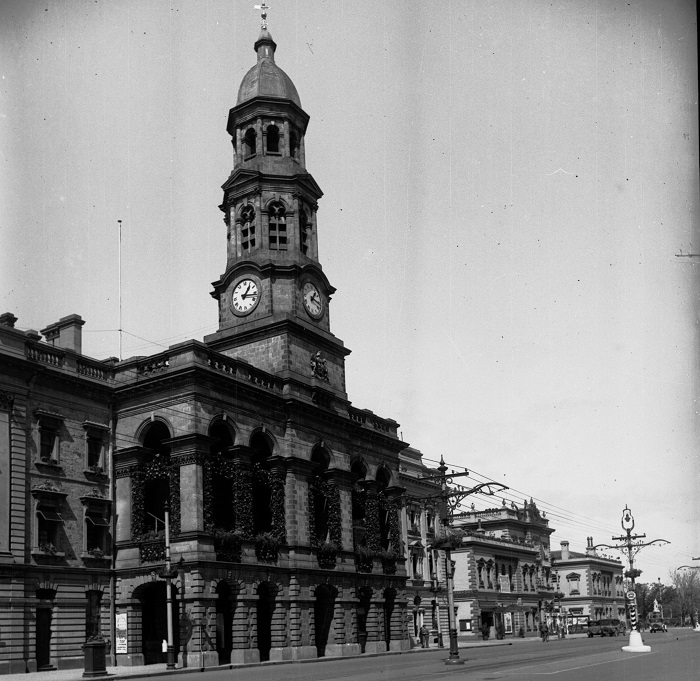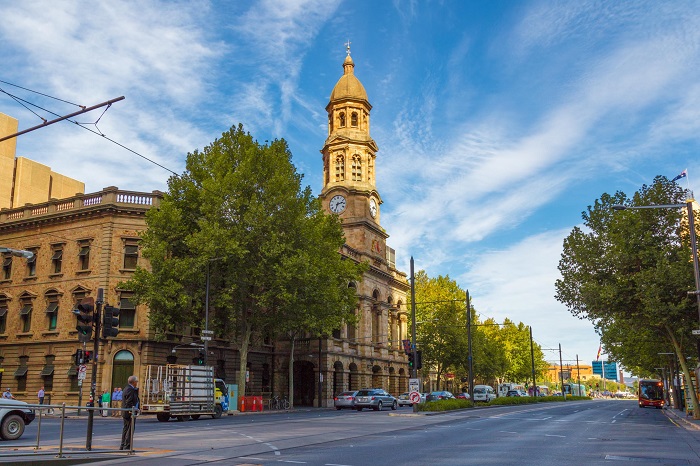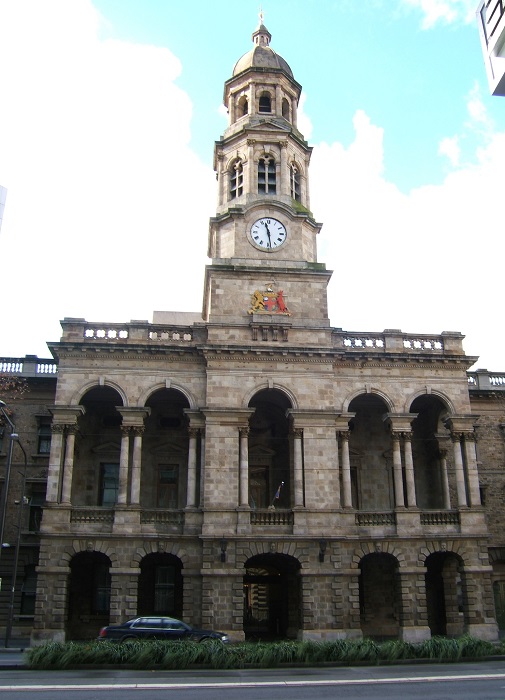Adelaide Town Hall is a historic building which is located on the corner of King William Street and Pirie Street, in the heart of the central business district of the City of Adelaide, the capital and most populous city of the State of South Australia, within the southern part of the Commonwealth of Australia. Standing proudly as one of the city’s most iconic heritage buildings, this historic structure has been an enduring symbol of civic pride and cultural life since the 19th century.
The construction of this magnificent structure began in 1863 and it was completed in 1866. This period was marked by rapid growth and urban development throughout the whole state, but the decision to build it was made by the Adelaide City Council, which aimed to establish a central administrative hub and an elegant venue for public events and official ceremonies. At the time, the city was emerging as a major colonial center, so the town hall was supposed to give a statement of Adelaide’s maturity and aspirations.
Construction was left to Edmund Wright who was a renowned architect that was committed to the Italianate style of architecture, which was popular in Victorian civic architecture so his aim combined formality and grandeur with lovely decorative detail. The building was built predominantly from locally sourced Glen Osmond stone and adorned with Kapunda marble and Bath limestone detail, the building was solid and refined. Its most famous feature is the Albert Tower, standing 44 m (144 ft) tall, which is in memory of Prince Albert, Queen Victoria’s consort.
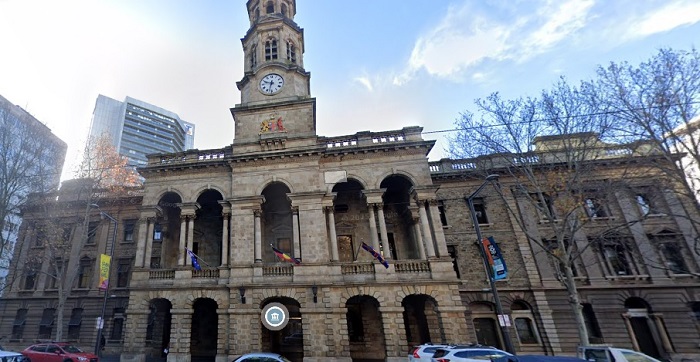
The building’s construction was a considerable undertaking for the time since it involved skilled stonemasons, carpenters, and artisans. It featured a large auditorium, council chambers, and smaller meeting rooms, all outfitted with rich timberwork, ornate plaster ceilings, and decorative ironwork, and even the massive pipe organ, which is a centerpiece of the main hall, was imported from England and still plays a role in performances and ceremonies today. Adelaide Town Hall served not only as a seat of local government but also as a vibrant social and cultural venue. It hosted significant historical events, including the famous 1964 visit by The Beatles, where thousands gathered to watch the band wave from the town hall’s balcony. For decades, the building has welcomed royal visits, musical performances, and civic milestones.
Today, the Town Hall remains an active civic building and a heritage-listed site that still hosts concerts, exhibitions, and receptions, while still functioning as the Adelaide City Council’s main meeting place. Its preservation and continued use are testaments to its continuous role in the community. Modern upgrades, such as lighting and accessibility improvements, have been sensitively integrated to maintain its historical character while still preserving its old charm and beauty for everyone to admire.
Visiting the Adelaide Town Hall is easy as it is centrally located and well-connected by public transport, including tram stops and nearby bus routes. For those arriving by foot, it’s within walking distance of Rundle Mall and Victoria Square. For those that would like to visit and see its alluring interior, guided tours are available by booking through the city council’s website, offering insights into the building’s architecture, history, and stories hidden within its walls. Entry is free for many events and tours, although specific performances may require tickets.
The best time to visit is during weekdays when tours operate, or during one of the city’s festivals like Adelaide Fringe or History Festival, when the hall often opens its doors to the public. Every evening, the building is beautifully illuminated, making it a lovely site to admire during nighttime.

Overall, the Adelaide Town Hall is not just a relic of the past, but it is a living part of Adelaide’s identity. Its elegant silhouette stands as a reminder of the city’s heritage, while its halls continue to echo with music, voices, and the energy of civic life, everyone who visits this great town in South Australia, should dedicate some time to visit it as it offers a window into the past and a space still very much alive with purpose today.

